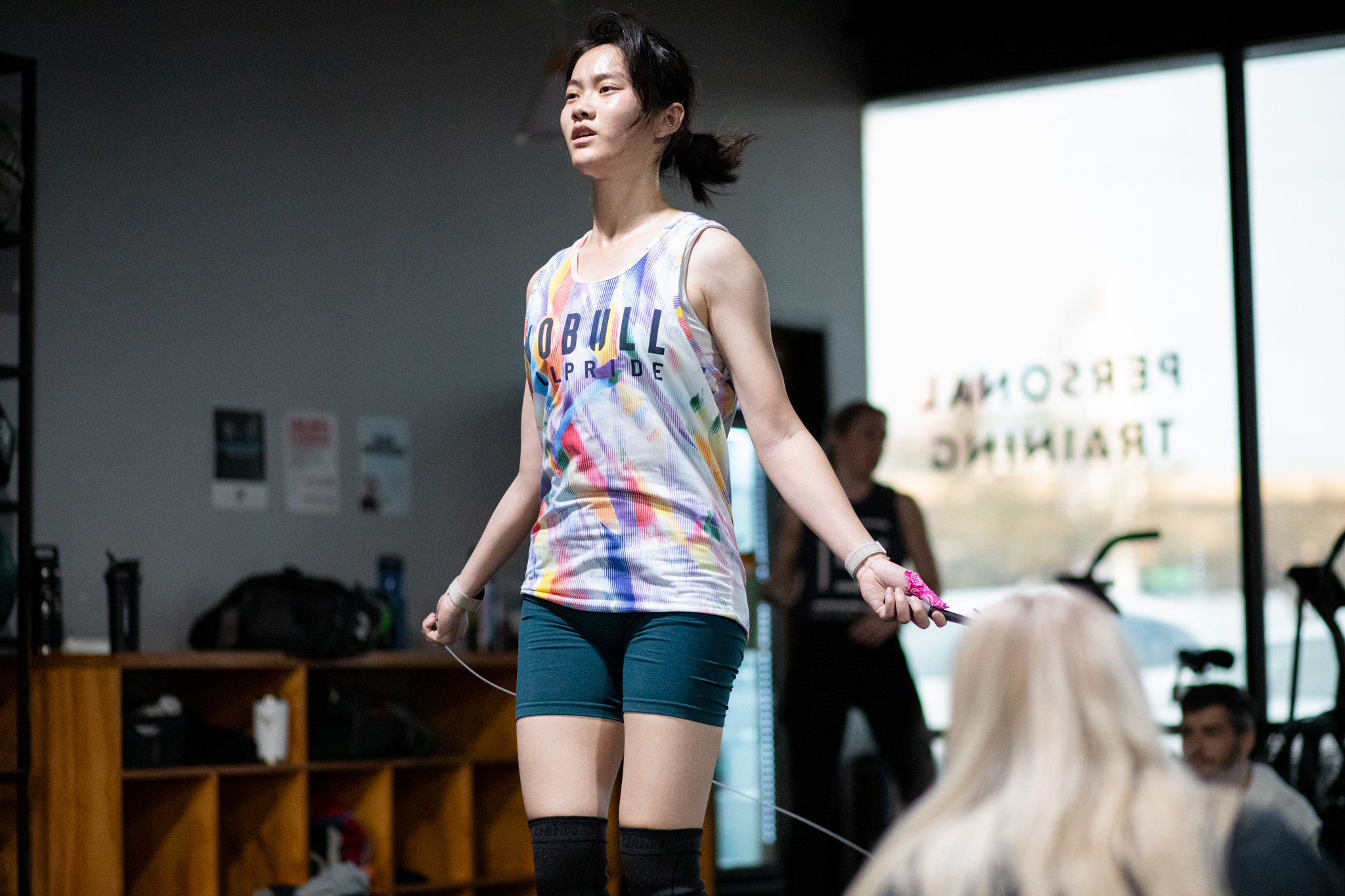

If you’ve ever whipped yourself in the shins mid-workout, you know: double-unders are a humbling CrossFit skill. The concept is simple — the rope passes under your feet twice for every jump — but the execution? That’s another story.
Some athletes seem to pick them up in a week. For others, it’s months (or years) of frustration. I’ve been there…sweaty palms, tangled rope, heart rate through the roof, and only three successful reps to show for it.
The good news? Double-unders are learnable. Like any CrossFit movement, they get much easier when you break them down into skills you can practice outside the chaos of a WOD. Here are three drills I use with athletes that build the timing, coordination, and efficiency you need to string together big sets without burning out.
This drill mixes single-unders and double-unders in the same set to help you nail the timing without rushing.
Many athletes fail at double-unders because they panic, jumping too fast or spinning the rope wildly. Mixing singles and doubles forces you to slow down, find your rhythm, and learn exactly how much rope speed and jump height you need for a clean rep.
This is a no-rope drill that teaches you the feel of a double-under jump without the frustration of tripping.
The double thigh tap mimics the rope’s double pass. This builds awareness of how high and how quickly you need to jump for two spins, and it locks in the timing of your jump before adding the rope back in.
Double-unders don’t require sky-high jumps — in fact, over-jumping usually makes you land heavy and slow your rope. This drill teaches you to use just enough height while keeping your body relaxed.
Efficient jumping means you can keep going longer without blowing up your calves and lungs. Many athletes discover they’ve been using way too much effort per rep — this drill helps you find that “just right” height and stay consistent.
Once you’ve practiced these drills individually, try this 8-minute EMOM (Every Minute on the Minute) to blend them:
The structure keeps your heart rate manageable while reinforcing technique under light fatigue — which is exactly how doubles show up in a workout.
Double-unders can be a mental game as much as a physical one. It’s easy to tense up and “fight” the rope when you miss. Instead, treat misses as feedback. Ask yourself:
Approach it like a puzzle you’re solving, not a pass/fail test. A few clean reps today is still progress toward stringing together big sets tomorrow.
Bottom line: Mastering double-unders isn’t about whipping yourself into submission. It’s about timing, relaxation, and consistent practice. Start with these three drills, keep your sessions short but focused, and you’ll go from tangled mess to smooth spins before you know it.
And remember, if you want eyes on your form or advice on rope sizing, grab a coach before or after class or sign up for a few skill sessions. Sometimes all it takes is one small adjustment to unlock your breakthrough moment.